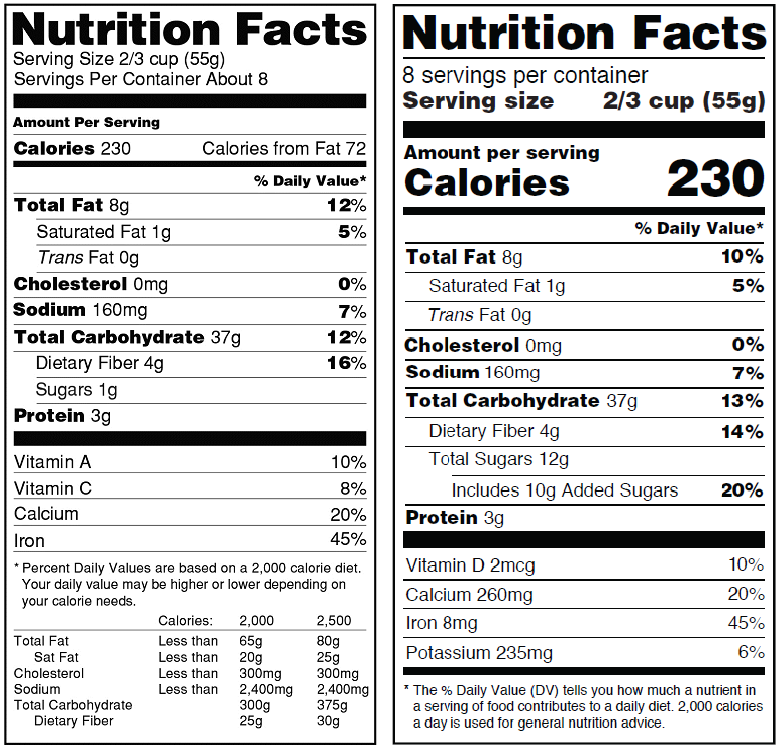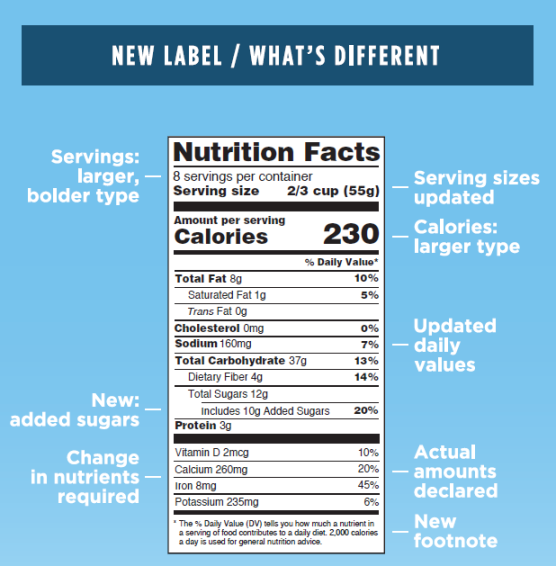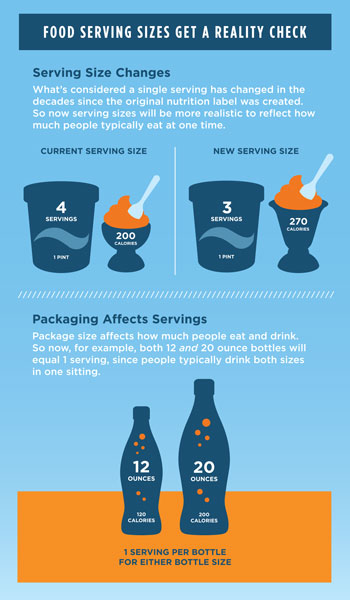Smart Eating: How to consume good Nutrition
Let food be thy medicine and medicine be thy food - Hippocrates of Kos.
Consuming good nutrition is challenging, to say the least, in the modern age. This is mostly due to our ever increasing work and personal obligations on a daily basis. In addition, quality nutritional food sources have also been reduced due to increasing demand (growing global population), limited variances in the food supply and food companies trying to increase their bottom line (Willett, 2005). Furthermore, the ever increasing flip-flops on nutritional information and advise ultimately leaves everyone confused. However, as nutrition science is continuously improving and evolving the latter is an expected nuance.
With convenience being the "order of the day", processed foods have become more prevalent within the supermarkets and limiting the excessive intake of certain ingredients has become more of a challenge. Sugar, Salt, Saturated and Trans Fat content (per serving or per 100 gram/ml) within a specific processed product are mainstay ingredients that have a detrimental effect on our health when ingested excessively. For some, this may be an obvious statement. However, it is important to note that, the World Health Report (2002) and Poulter et. al (2015) have listed hypertension (high blood pressure)—an irrefutable consequence of consistent overindulgence in salt (backed by over 30 years of scientific evidence)—as a global epidemic and the leading cause of mortality worldwide.
Reason being, the average daily salt intake unfortunately surpasses the recommended daily amount (less than 5 grams per day). According to the World Health Organisation (Europe) (2014), the average salt intake within European countries ranges from 7-18 grams/per day—mostly due to the consumption of processed foods.
Furthermore, the overindulgence is also prevalent in the United States—with an average daily intake of 10 grams of salt per day for men and approximately 7.5 grams of salt/pd for women (Centers for Disease Control and Prevention, 2016). Moreover, it is also important to note that—within the developing world—the increase in disposable personal income (DPI), higher opportunity cost and globalization have simultaneously induced an increasing demand for processed foods.
In addition to the aforementioned ingredients, there are other ingredients which are becoming prevalent within our food choices at our local supermarket. Specifically, E-numbers are now found more often on the labels of processed foods—within the European Union (EU)—than ever before. So, what are they?
E-numbers are, in essence, assigned digital codes for specific food additives within Europe (the E abbreviation represents and confirms the testing process that has been carried out by the European administrators). These additives range from colours, flavouring agents, preservatives, anti-oxidants (natural substances), sweeteners, gelling agents and emulsifiers. However, whilst not all E-numbers are bad—some being natural substances—there are a few which we should try to limit or abstain from as much as we can. This is due to the negative side-effects that have been reported among some customer demographics.
Although the foregoing statements affect us all, it is still important for us to strategically seek the necessary macro and micro nutrients our bodies need to function optimally for a sustained period of time. After all, our health is truly our divine wealth. Therefore, how do we make better food choices for increased nutritional benefits? Here are a few elements that are integral to increasing the nutritional benefits of your diet.
Understanding the Nutritional Label
Knowing how to decode the nutritional labels on food packaging is important. Why? Because it allows us to make better decisions on the products we consume in order to optimally meet the daily demands of our individual energy needs and lifestyle.
Due to government legal regulations and directives, all food product labels should provide the energy content in kilocalories (kcal) and kilojoules (kJ), and specific information on the nutrient content of included fats, saturated fats, carbohydrates, sugar, protein, and salt per 100 gram (g) or millilitre (ml) (European Parliament, 2011); (FDA, 2016).
An example of the aforementioned regulations and directives can be seen in the images below.



Now, I am fully aware that everyone has their own specific choices of food brands or manufacturers. However, the quality of the food being proposed from your favourite brand/s may not be the best option for you nutritionally. Therefore, I suggest that you explore the variety of food offerings being proposed in your local supermarket but most importantly, start to pay close attention to nutritional labels—which can be found at the back of the product packaging. This—the nutritional label—is where all the good stuff, or not so good stuff, are listed in detail.
Keeping an eye on Salt intake
Being from the Caribbean, my taste buds were programmed to a sensory profile of foods that have been "well seasoned". However, although condiments are still a part of my daily food preparation, I have sought to keep a disciplined eye on the amount and type of salt (sodium chloride) that I consume. As a necessary micro-molecular compound that assists with the physiological needs of the human anatomy, salt is a must have ingredient within our individual diets. Fundamentally, salt consists of two essential ionic compounds (Electrolytes). These compounds are Sodium Ion (Na+) and Chloride Ion (Cl-), which—along with other ionic compounds—synergistically assists with the physiological function of the human anatomy.
Notwithstanding, it is necessary to stay within the nutritional health guidelines of the recommended daily salt intake amount—less than 5 grams per day. Furthermore, it is also integral to choose a good quality salt option. Standard table salt options are mostly over processed—therefore, a considerable loss of its mineral value—and consist of an increased sodium content.
However, Pink Himalayan salt is classified as rock salt or halite, which comes from the Punjab— Khewra— region of Pakistan about 190 miles from the Himalayas. This region has one of the richest salt fields in the entire world and dates back to the Earth's creation (Encyclopædia Britannica, 2014). However, the mineral-dense salt was not available for commercial use until after 1849, via the utilization of Dr. H. Warth's mining techniques.
Another good alternative (similar to pink Himalayan salt) would be Celtic Sea salt—produced by farming methods dating back centuries from Brittany, France— both (pink Himalayan salt and Celtic Sea Salt) contain high numbers of trace minerals (over 60 minerals—e.g. Calcium, Magnesium, Potassium, Sulphates etc.), lower sodium chloride content than generic table salt and offer greater overall health benefits—such as balances bodies pH levels, stimulating digestion and the body's metabolic process (Sircus, 2013).
Therefore, it is our recommendation and opinion (based on research and our own experience) that pink Himalayan salt and Celtic Sea salt are far superior nutritional options (as they are unprocessed and unrefined, therefore, maintaining all of there nutritional content) to generic table salt— of which, the latter (table salt), can be found in most supermarkets or convenience stores. On the other hand, pink Himalayan and Celtic Sea Salt can be found in most whole foods stores. However, make sure to get the ones that are sourced from the Punjab region of Pakistan (regarding pink Himalayan salt) in order to avoid unauthentic options.
However, if suffering from hypertension or any other cardiovascular disease, please consult your local physician prior to use.
Controlling the Sweet Tooth
According to the University of California and San Francisco: Sugar Science (n.d.), the recommended daily (added) sugar intake amount is 6 teaspoons (25 grams) for women and 9 teaspoons (38 grams) for men. Therefore, our daily food choices' sugar content should compliment our efforts in attaining the aforementioned respective goal— 25g for women and 38g for men. Reason being, simple sugars have a direct impact on blood sugar (Insulin) levels within the body. As table or refined sugar is ingested it goes directly into our bloodstream, hence the quick rush of energy that one feels subsequent to having something packed with simple sugars. However, this glucose (sugar) release into the bloodstream causes a reaction which influences the level of sugar within the blood to rise.
Moreover, this constant influx of simple sugars—from carbonated drinks, ready to drink "fruit" drinks, sweets and chocolates etc.—on a daily basis creates the environment for Hyperglycemia. Therefore, the less frequently you spike your sugar levels the less of a chance you have to accumulate Hyperglycemia (the main precursor to Diabetes) and the loss of insulin sensitivity, in addition to limiting excessive weight gain.
Healthier natural alternatives—to generic table sugar—that will support blood sugar levels and provide greater nutritional benefits within the body are Raw Honey, Maple Syrup (Grade B/Grade C) and Coconut Nectar/Sugar.
Limiting intake of Saturated Fats and abstaining from Trans Fats
Keeping our daily Saturated Fat intake at a healthy level is key by not over indulging in foods that are densely packed with saturated fat. This fatty acid (saturated fat) is abundantly present in animal proteins—such as red meats, chicken and dairy products.
In addition, Trans Fats (trans-unsaturated fatty acids) are one of the worst forms of Fat that you can ingest. Reason being, they are predominantly artificial fatty acids which have been created via an industrial process called hydrogenation. Unfortunately, they are easily accessible due to the high production and consumption of processed foods—ready to eat pastries, cookies, cakes, hydrogenated oils etc. Moreover, it is important to know that some food manufacturers will cleverly use alternative names for this ingredient (Trans Fats) on the nutritional label and are at times referred to as "partially hydrogenated oils". However, there are naturally-occurring Trans Fats which can also be found in some red meats and dairy products—such as lamb, beef and milk-fat (found in milk, butter, ice cream etc).
It is widely known that saturated fats have an adverse effect on the human anatomy—increases Low Density Lipoprotein (LDL) cholesterol concentration within the human anatomy (heightening the risk of cardiovascular diseases). Yes, a small amount—5% of total daily caloric intake (American Heart Association, 2015)—can be tolerated, but if not oxidizing these fatty acids via regular (at least 4 times per week) vigorous resistance/high intensity interval training exercise then eat as little (less than 5% of total daily caloric intake) saturated fat as possible.
However, the same cannot be said regarding Trans Fats. According to the National Academy of Sciences' Institute of Medicine, the recommended daily Trans Fat intake is 0 grams per day. Moreover, Laake et. al (2013)—a Norwegian study comprising of a large study sample (> 75000 people)—proposes that the inclusion of Trans Fats (both hydrogenated and naturally-occurring) within our diet increases the risk of coronary heart disease. Moreover, the Norwegian study also argues that Trans Fats increases LDL (Bad) Cholesterol concentration within the body and cardiovascular disease risk—especially in women. Lastly, a research study carried out by the University of Copenhagen (2010), reveals that Trans Fats lowered High Density Lipoprotein (HDL) (Good) Cholesterol levels in sample participants by 10% and increased Low Density Lipoprotein (LDL) levels by 18%.
Therefore, healthier fatty acid alternatives should become a necessary staple in your diet. Healthier alternatives that promote overall health and functional benefits are Monounsaturated and Polyunsaturated fats and oils (see the National Academies of Sciences' overview of dietary fats here).
Be aware of E-numbers (or Additives)
As previously mentioned above, some e-numbers represent natural ingredients on a product's nutritional label. Moreover, some E-numbers are effectively used to preserve processed food quality and protect against potent food-borne neuro-toxins and bacteria such as Clostridium botulinum (or Botulism) (See a summary of all E-numbers here). In order to identify which E-numbers are present in a specific product, always read the product's list of ingredients. Furthermore, another point to note is, the main ingredient/s in any product is always listed as the first or second substance on the ingredients list.
The E-numbers known to have a negative effect on the human anatomy are found in the flavour enhancers category (ranging from E600 to E699) and the miscellaneous E-numbers category (ranging from E900 to E999).
Specifically, these are Monosodium Glutamate (MSG) (E621) and Aspartame (E951)— which are known as "excitotoxins". According to neurosurgeon, Dr. Russell Blaylock (M.D), Excitotoxins are flavour enhancers that have a history of causing brain cell damage. Reason being, the aforementioned excitotoxins' excessive process of brain cell stimulation (impulse generation and transmission), which ultimately results in excitotoxicity and neuro-inflammation (exhausted neurons that become ineffective and die leading to ischemic strokes) (Blaylock & Schwartz, 1995); (Liu R et. al, 2017). Furthermore, the more ineffective neurons which are present in our brain increases the risk of memory loss and other degenerative diseases like Parkinson’s, Huntington’s, ALS and Alzheimer’s Disease.
In order to mitigate the risk of exhausted neurons in our brain via excitotoxins, we need to include foods or supplements that are rich in Magnesium, Zinc, Alpha-lipoic acid, Co-enzyme Q10 and Vitamins B1, B2, and B3 respectively (Thiamine, Riboflavin and Niacinamide).
In conclusion, when armed with scientific research-based recommendations, we are equipped to develop a nutrition intake framework for ourselves. Moreover, this framework should fundamentally be grounded in less processed foods and more fresh food sources. Furthermore, in order to make better nutritional choices for a healthier future for ourselves and our families, it is also important to educate ourselves on nutrition so that we are more aware of the various choices that are available to us in the modern age.
Cited Literature:
American Heart Association (2015), Saturated Fat.
Blaylock, R.L & Schwartz G.R. (1995), Excitotoxins – The Taste That Kills. Published January 1st 1997 by Health Press (NM).
Centers for Disease Control and Prevention (2016), Get the Facts: Sodium and Dietary Guidelines.
Encyclopædia Britannica Inc. (2014), Salt Range.
European Parliament (2011), Regulation (EU) No 1169/2011 of the European Parliament and of the Council of 25 the provision of food information to consumers.
Food and Drug Administration (FDA) (2016), Changes to the Nutrition Facts. Label.
Laake, I., Carlsen, M. H., Pedersen, J. I., Weiderpass, E., Selmer, R., Kirkhus, B., Thune, I. and Veierød, M. B. (2013), Intake of trans fatty acids from partially hydrogenated vegetable and fish oils and ruminant fat in relation to cancer risk. Int. J. Cancer, 132: 1389–1403. doi:10.1002/ijc.27737.
Liu R, Pan MX, Tang JC, Zhang Y, Liao HB, Zhuang Y, Zhao D, Wan Q. Role of neuroinflammation in ischemic stroke. Neuroimmunol Neuroinflammation (2017);4:158-66.
National Academy of Sciences' Institute of Medicine (2002), Dietary Reference Intakes for Energy, Carbohydrate, Fiber, Fat, Fatty-Acids, Cholesterol, Protein and Amino-Acids.
Poulter, N. R., Prabhakaran, D. & Caulfield, M. (2015), Hypertension. The Lancet, Volume 386 , Issue 9995 , 801 - 812.
Sircus, M. (2013), Real Salt, Celtic Salt and Himalayan Salt.
University of California and San Francisco (n.d.). Sugar Science: How Much Is Too Much?The growing concern over too much added sugar in our diets.
University of Copenhagen (2010), Effect of trans fatty acid intake on abdominal and liver fat deposition and blood lipids: A randomized trial in overweight postmenopausal women.
Willett, W.C., & Skerrett, P.J. (2005), Eat Drink and be Healthy. The Harvard Medical School Guide to Healthy Eating. The Free Press, New York.
World Health Organisation (Europe) (2014), Reducing Salt Consumption.
World Health Report (2002), Reducing risks, promoting healthy life. World Health Organization; Geneva: 2002.
Congratulations @dantebaker! You have completed some achievement on Steemit and have been rewarded with new badge(s) :
Click on any badge to view your own Board of Honor on SteemitBoard.
For more information about SteemitBoard, click here
If you no longer want to receive notifications, reply to this comment with the word
STOP